Oregon is one of the most beautiful states in the Pacific Northwest. There are plenty of natural areas, including scenic forests, lakes, and places for wildlife to thrive. But it does get cold in the winter, causing many birds to migrate to warmer areas. However, the winter weather is welcoming for certain bird species that do well in the colder temperatures. Wildlife refuges such as the Maheur National Wildlife Refuge are the perfect places to see these birds in their natural habitat. These birds spend their winters loving life in Oregon.
1. Black-Capped Chickadee
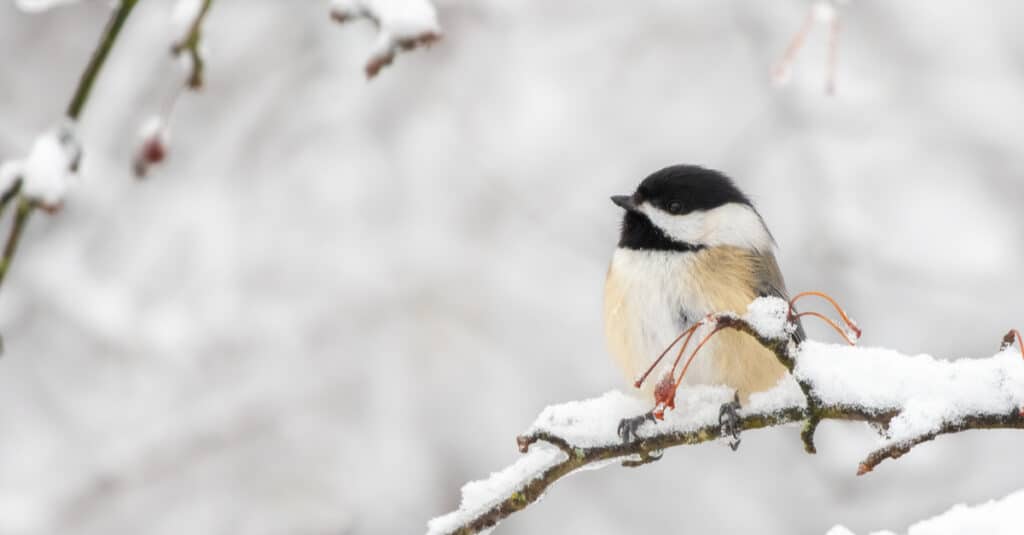
Black-capped chickadees have black feathers on their heads which stand out in the snowy winter weather.
©Mr.Coffee/Shutterstock.com
These round and fluffy birds are plentiful in nature preserves as well as backyards in Oregon during the winter. The black-capped chickadee has a distinctive black “cap” of feathers on its head that makes it easy to identify. They have white cheeks just under their black plumage. The rest of its body is gray, which blends in well with the snowy winter landscape.
2. American Robin
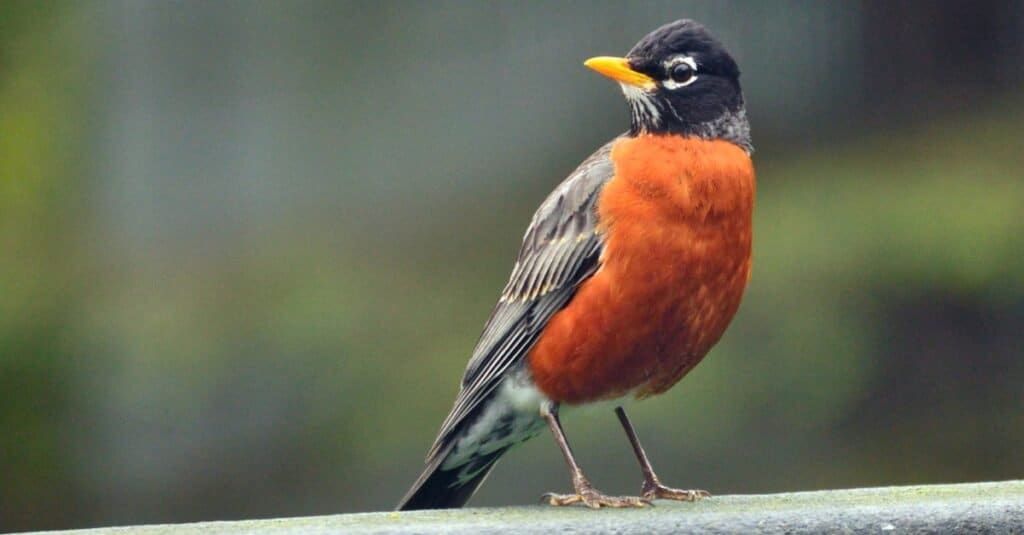
The male American robin has red feathers on its belly that is easy for most birders to recognize.
©iStock.com/PhotosByMSA
Some American robins migrate in search of food but many spend the entire winter in the same place. In some cases, they form larger flocks in the winter than in the spring or summer. This may be due to the scarcity of food. If they can find a plentiful food source, they tend to stick in that area. American robins are one of the most recognizable birds due to their distinct coloring. They have orange chests and bellies with darker gray backs, wings, and heads. American robins are also plentiful in almost every part of the United States and many parts of Canada. So people are used to seeing this bird year-round.
3. House Finch
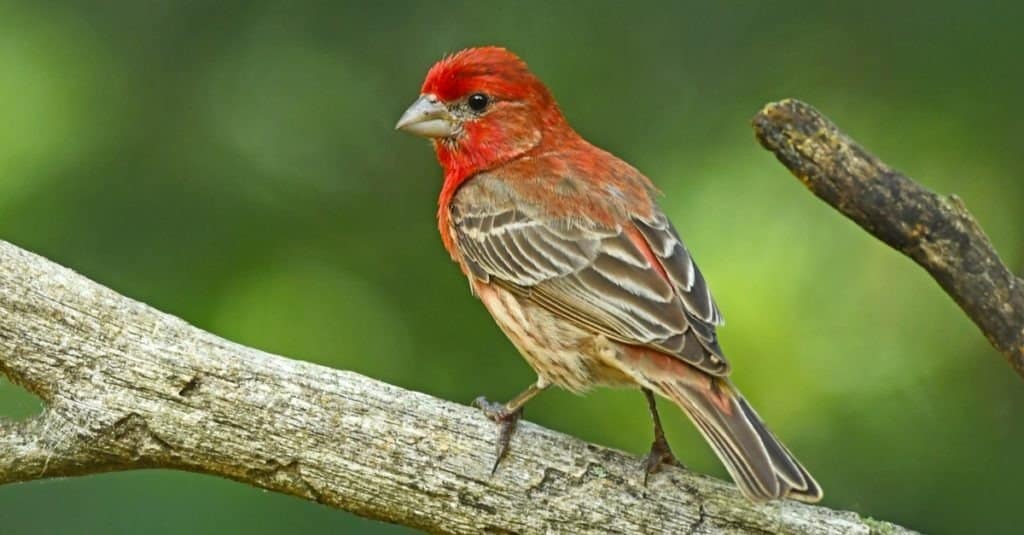
House finches are some of the most common finches all around the United States and southern parts of Canada.
©Brian A Wolf/Shutterstock.com
You can easily recognize house finches by their red head and distinctive song. Like the American robin, house finches live in almost every part of the U.S. In Oregon, they stay through the winter months without any problems. They eat seeds, berries, and small flower buds. Because they have a plant-based diet, they have to look hard in winter to find something to eat. House finches sometimes supplement with mealworms when food is scarce.
4. Anna’s Hummingbird

Anna’s uhmmingbird uses their long beak and tongue to extract nectar from flowers.
©Mason Maron /Shutterstock.com
These hummingbirds can be seen all along the Pacific Coast. They have bright green feathers with a red crown, the only species of hummingbird in North America to have this feature. Anna’s hummingbirds do move to lower altitudes during the winter months but are still found in the same general habitat and range.
5. Northern Flicker

A northern flicker has bright red cheeks.
©DawnKey/iStock via Getty Images
Northern flickers are large woodpeckers and easy to recognize due to their spotted feathers, white or gray heads, and size. They eat bugs that are more plentiful on the ground rather than in trees, including ants and beetles. So they’re often found digging in the dirt at the base of a tree rather than pecking into the bark. However, they are still very noisy like other woodpeckers when they peck at the wood.
6. Red-Tailed Hawk
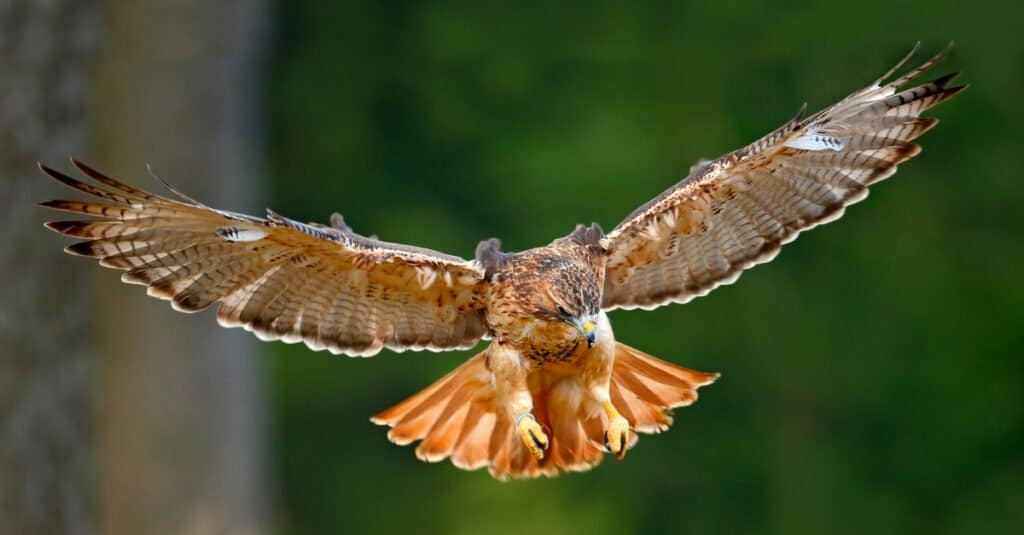
The red-tailed hawk isn’t particularly dangerous to people, but it is a vicious and relentless hunter that might prey on puppies or kittens and poultry like chickens.
©Ondrej Prosicky/Shutterstock.com
The red-tailed hawk is named for its red tail feathers. They are easy to spot because of their distinct coloring but also because of just how common of a sight they are. Red-tailed hawks live throughout Oregon and frequent high perches like utility poles, tall trees, or even roofs. If you are driving on the highway and see a bird of prey soaring nearby or perched on a utility pole, there’s a good chance that it’s a red-tailed hawk.
7. Golden Eagle
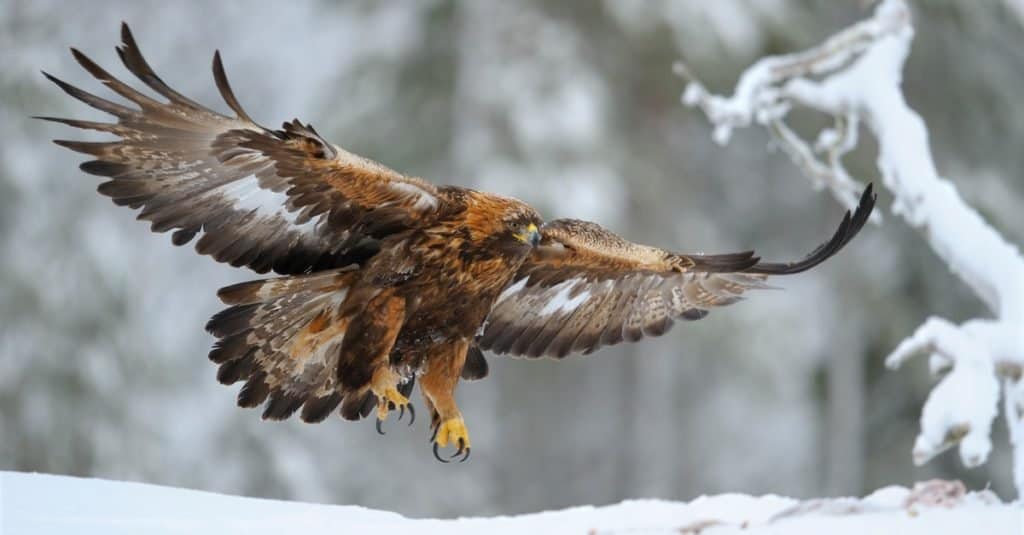
Golden eagles may inhabit the same nest for years, or alternate between different nests.
©Vladimir Kogan Michael/Shutterstock.com
These birds of prey are synonymous with the American West and are found in all states in the region, including Oregon. Golden eagles live throughout the United States but are really associated with the rugged and natural landscape of the West. They do migrate but come down from Canada to spend the winter in Oregon. Some birds stay in Oregon year-round thanks to the plentiful food and milder weather, at least compared to the far northern areas of Alaska and Canada. Birds that stay in the area all year are called resident populations. Those who come to Oregon during the winter migration are called migratory populations.
Summary of Birds That Spend Their Winters in Oregon
| Number | Bird | Scientific Name |
|---|---|---|
| 1 | Black-capped chickadee | Parus atricapillus |
| 2 | American robin | Turdus migratorius |
| 3 | House finch | Haemorhous mexicanus |
| 4 | Anna’s hummingbird | Calypte anna |
| 5 | Northern flicker | Colaptes auratus |
| 6 | Red-tailed hawk | Buteo jamaicensis |
| 7 | Golden eagle | Aquila chrysaetos |
The photo featured at the top of this post is © Mel S U/iStock via Getty Images
Thank you for reading! Have some feedback for us? Contact the AZ Animals editorial team.






